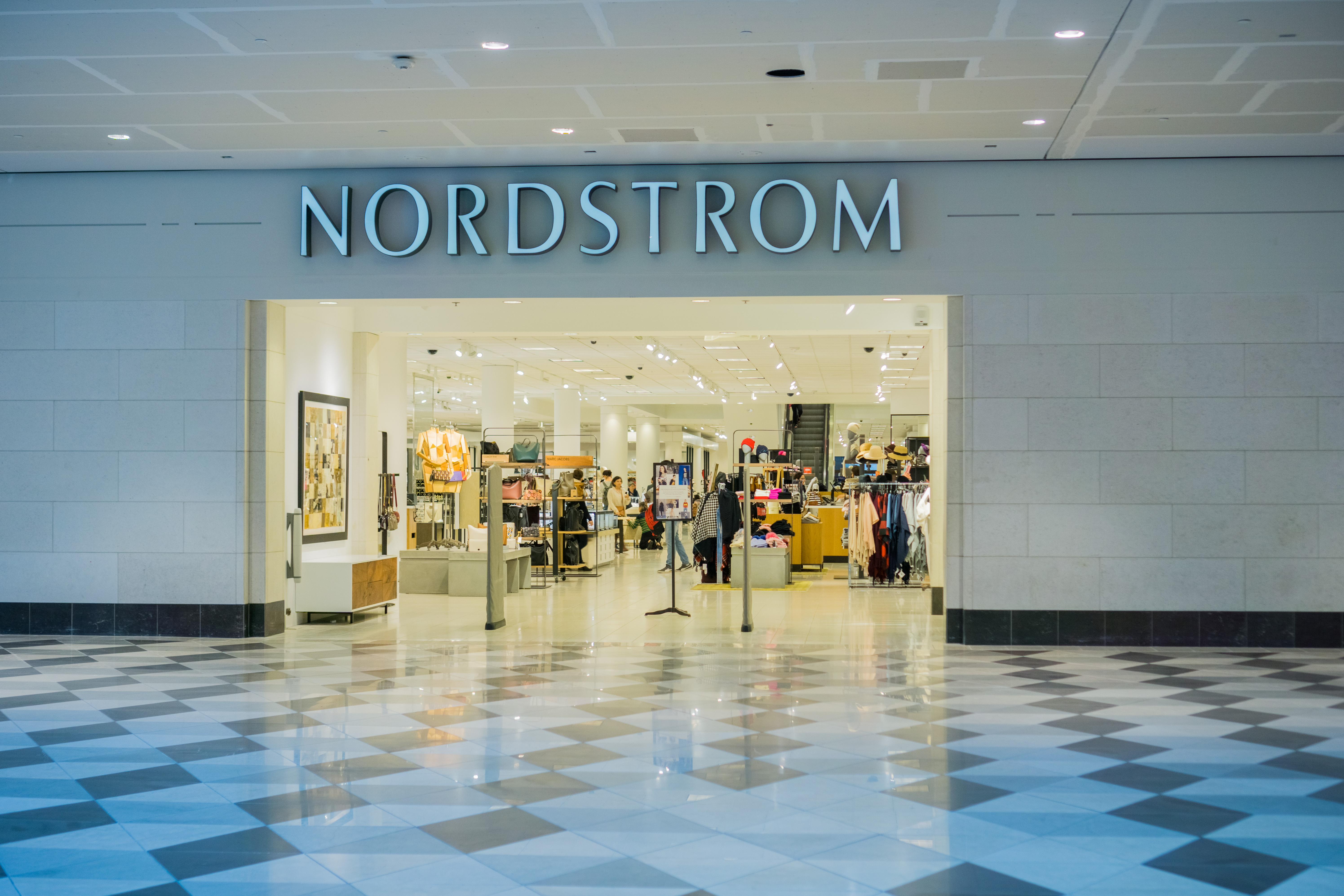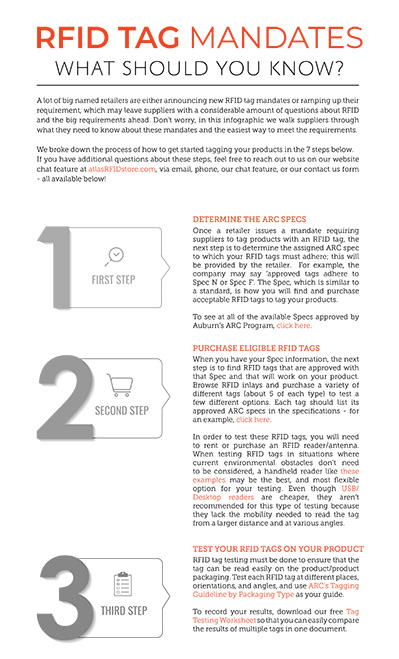Lowe's RFID Mandate for Retail Inventory Management
Lowe's, a leader in home improvement retail, is taking a significant step forward in retail technology by mandating the use of UHF RFID (Ultra High Frequency Radio-Frequency Identification) systems in its stores. Lowe’s RFID implementation, which started in 2022 and is still ongoing, is set to revolutionize the way inventory management is handled, not only improving internal processes but also enhancing overall customer experience. As retail innovation continues to evolve, Lowe's adoption of UHF RFID positions the company at the forefront of advanced inventory management strategies.
To read about how Lowe’s partnered with Zebra Technologies for a large-scale RFID hardware implementation push – read the Lowe’s RFID Success Story.
3 Main Reasons Behind Lowe's RFID Mandate
Lowe's recent decision to mandate the use of Ultra High Frequency (UHF) Radio-Frequency Identification (RFID) in their retail stores is driven by multiple compelling factors. This strategic move aims to address several key areas that are vital for the enhancement of its operations and customer satisfaction.

1. Improved Inventory Management
One of the primary reasons for Lowe's mandate is the need for improved inventory management. Traditional methods of inventory tracking often result in inaccuracies and inefficiencies. By adopting UHF RFID technology, Lowe's can ensure that their inventory records are more precise. This technology allows for quick and accurate scanning of large quantities of items at once - without the need for line-of-sight, which drastically reduces the time spent on inventory counts and minimizes human error.
2. Enhanced Customer Experience
UHF RFID also plays a pivotal role in enhancing the customer experience. In a retail environment, customer satisfaction is closely linked to product availability and shopping convenience. With RFID, Lowe's can keep better track of stock levels, ensuring that the right products are consistently available on the shelves. Additionally, this technology can be used to streamline checkout processes, reducing wait times, and improving the overall shopping experience.
3. Competitive Advantage in Retail Innovation
In the highly competitive retail sector, staying ahead in terms of technology adoption can provide a significant advantage. By mandating UHF RFID, Lowe's positions itself as an innovator in retail technology. This initiative not only improves operational efficiency but also strengthens its brand reputation as a leader in embracing cutting-edge solutions. Retailers who fail to evolve with such technologies risk falling behind in a market that continually demands faster and smarter shopping solutions.
RFID's Impact on Inventory Management
The implementation of UHF RFID technology by Lowe's promises to revolutionize their approach to inventory management. This shift brings numerous benefits that directly impact store operations and business outcomes.
Real-Time Inventory Tracking
One of the standout advantages of using UHF RFID technology is near real-time inventory management. Unlike barcodes, RFID tags can be scanned from a distance as they emit radio waves. This means that inventory data can be updated instantly as items move in and out of the store, providing a comprehensive and up-to-the-minute view of stock levels. With real-time data at their fingertips, store managers can make informed decisions quickly, optimizing inventory levels to meet customer demand.
Reduction in Inventory Shrinkage
Inventory shrinkage is a significant concern for retailers, impacting profitability. The deployment of UHF RFID technology helps in the reduction of theft and loss due to human error. RFID systems can offer precise monitoring of products in-store, making it harder for items to be stolen or misplaced. Additionally, by tracking each item individually, stores can identify discrepancies in stock levels, allowing them to address issues proactively.

Efficient Stock Replenishment
Stock replenishment is another area where UHF RFID demonstrates its value. By having accurate inventory data, Lowe's can automate and streamline the replenishment process. When a product's stock is low, the system can trigger an automatic reorder, ensuring shelves are consistently stocked with minimal manual intervention. This not only saves time and resources but also reduces the risk of overstocking or under stocking, which can lead to lost sales or increased holding costs.
Implications for Lowe's Supply Chain Partners
Lowe’s adoption of UHF RFID technology extends beyond in-store operations, impacting their supply chain partners as well. This move necessitates enhanced collaboration and offers opportunities for growth and innovation
Meeting Retailer Compliance Requirements
As Lowe’s mandates the use of UHF RFID, supply chain partners must meet specific compliance requirements.
- Tagging of Products: Partners will need to tag products with RFID labels compliant with Lowe’s specifications. All supplier products in the Appliances and Paint departments will need to be tagged with a UHF RFID tag (most adhering to Spec Y2) before being sent to Lowe’s by 1/1/2025. Learn more about RFID retail mandates. For more guidance, contact us about finding the right RFID tag for your paint or appliance!
- Quality Assurance Standards: Ensuring that all tagged items meet Lowe’s standards and do not disrupt store operations.

Increased Collaboration and Coordination
For supply chain partners, the success of UHF RFID implementation hinges on effective collaboration with Lowe’s.
- Shared Information Systems: Enhanced data sharing capabilities enable better coordination between Lowe’s and its partners, ensuring that products are delivered efficiently and accurately.
- Logistics Synchronization:Real-time data allows for improved decision-making regarding product delivery schedules and order fulfillment processes.
Opportunities for Innovation and Growth
While compliance is a necessity, there are also substantial opportunities for innovation and growth for supply chain partners.
- Enhanced Product Tracking: Using UHF RFID technology allows for advanced tracking capabilities throughout the supply chain, leading to more efficient logistics and enhanced customer service.
- Data-driven Insights: Partners can utilize data collected from RFID technology to gain insights into operational efficiency and consumer demand, helping drive strategic growth.
- Competitive Advantage: By adopting cutting-edge technology, supply chain partners position themselves as leaders in innovation, potentially gaining a competitive edge in the market.
The Future of Retail with UHF RFID
Lowe's recent decision to mandate UHF RFID technology in their retail stores marks a significant shift towards advanced inventory management and enhanced customer experiences. UHF RFID, or Ultra High Frequency Radio-Frequency Identification, allows for faster and more accurate tracking of inventory compared to traditional barcodes. By using RFID tags to automatically identify and monitor items, this technology paves the way for substantial improvements in stock management.

Expanding & Broadening Impact on Retail
Though primarily aimed at improving inventory management, UHF RFID technology has the potential to revolutionize other areas of retail operations. For example, it can enhance customer service by reducing wait times through faster checkout processes and improving stock availability on shelves. RFID can enable and improve curbside ordering, by ensuring website stock accuracy, and quick and easy item picking. Additionally, RFID can assist in theft prevention, as items with RFID tags can be easily tracked within the store environment.
The adoption of UHF RFID technology at Lowe’s also signals a broader evolution within retail technology as a whole. As more retailers follow suit, there will be increased demand for new solutions and integrations with other emerging technologies, such as artificial intelligence and the Internet of Things (IoT). These synergies could lead to smarter stores, where systems autonomously manage tasks ranging from inventory to personalized marketing strategies.
Conclusion
Ultimately, this strategic adoption places Lowe's at the forefront of technology-driven retail solutions, setting a standard for others in the industry to follow. As the retail landscape continues to evolve, technology like UHF RFID will likely become pivotal in shaping the future of shopping experiences.
Lowe's Success Story - Featuring Zebra Technologies
Take a look at this RFID implementation success story, featuring Lowe's Home Improvement and Zebra Technologies. This RFID hardware rollout paved the way for the home improvement retailer to start tagging their inventory at point-of-sale, and further up the supply chain via RFID supplier mandates.


